How to deal with the scale insect on indoor plants?

If you notice that the leaves of indoor plants have become sticky, you should inspect your green pet as soon as possible, because such symptoms in most cases indicate the appearance of a scale insect. This parasite secretes a sticky liquid that clogs the pores and prevents the green pet from breathing. Today we will talk about what this parasite is and how to deal with it.
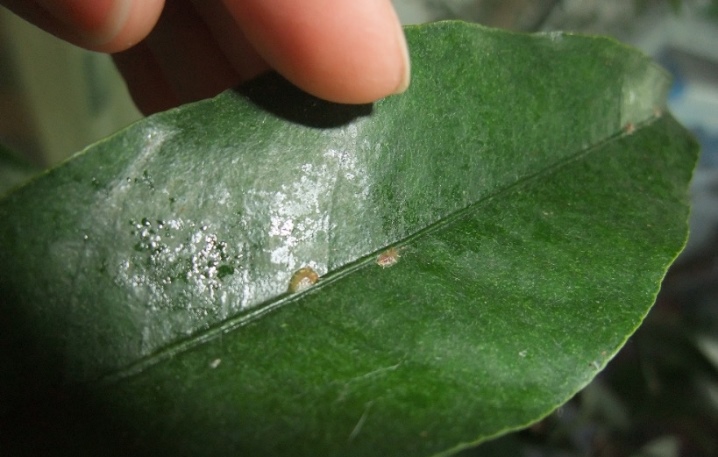
What is a scabbard and what does it look like?
One of the most dangerous pests of domestic plants is the scale insect, it can completely destroy all plants in the house in a matter of weeks. The parasite does not spare even semi-poisonous flowers. Visually, the insect resembles small brown tubercles, which are almost motionless on leaf plates and young shoots. The size of the pest does not exceed 5 mm. Females are usually inactive, they have a dense shell, under which larvae develop. Males, on the other hand, are quite active and move quickly through the green parts of a houseplant, and from there to neighboring flowers. That's why Once you find a pest on one of your green pets, you can almost certainly spot the insect on neighboring crops.
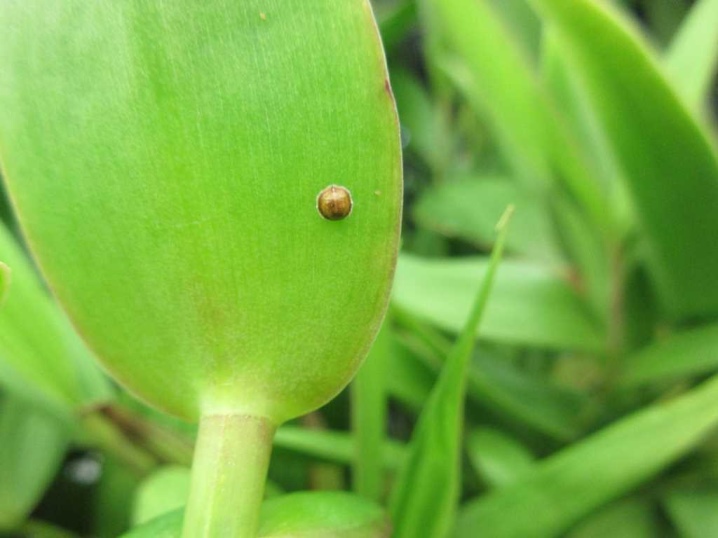
They reproduce by scabbard eggs, while the clutch is microscopic in size, so it is almost impossible to notice it. Larvae and adults feed on plant juices - first they attack young and juicy leaves, and then move on to older, partially lignified fragments. A massive attack of scale insects can destroy a large adult plant in 10-14 days, leaving behind only a withered trunk and roots.
If the scabbard has damaged more than half of the leaves, it will no longer be possible to save the indoor flower.
Flowers with smooth leaves are most often attacked, since the fluff can prevent the parasite from fixing on the plate. At the initial stage, it can be difficult to notice signs of damage. - they usually settle on the back of the leaves, and it is possible to understand that the plant is infected only by the presence of honeydew - sticky secretions.
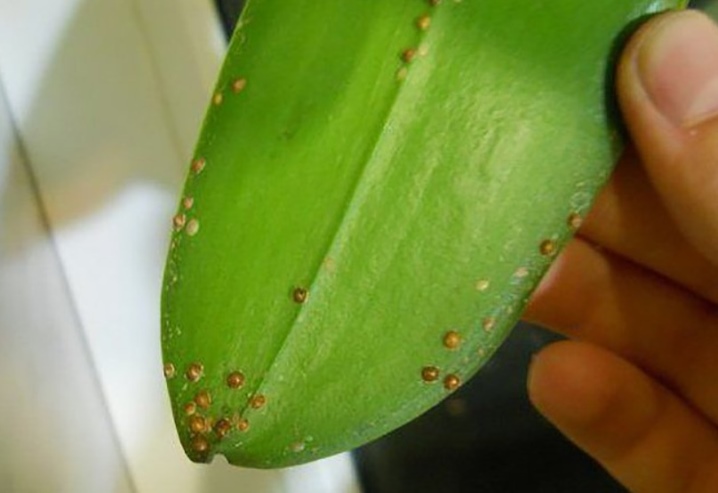
As the colonies grow, other signs show themselves.
- Small rounded bumps - they can be colored in various shades of brown, red, as well as yellow or white. Outwardly, it looks as if the leaves are covered with tiny spots, and the colonies themselves take the form of growths. Most often they are localized near the veins.
- Leaves and stems begin to dry, and the buds wither before they open up. These signs directly indicate that the plant is infested with pests. They prevent the flow of minerals and water to different parts of the flower. The larger the colony, the more area the tubercles will occupy.
You need to fight the scabbard immediately after its detection, otherwise the plant will die.
The false shield is very similar to the scabbard. Both insects are dangerous to green pets and can quickly lead to the complete wilting of the crop.

What does it come from?
The scale insect can appear on indoor plants even when you care for them very responsibly. This insect can infect any plant, including succulents., but still he has his "favorites", on which she settles in the first very - this is a laurel and an orchid. These parasites also do not bypass exotic palms with ivy.With great pleasure, the insect feasts on the vital juices of chlorophytum, oleander, cyperus, aucuba and many other plants. Even the usual hippeastrum and pelargonium are under attack.
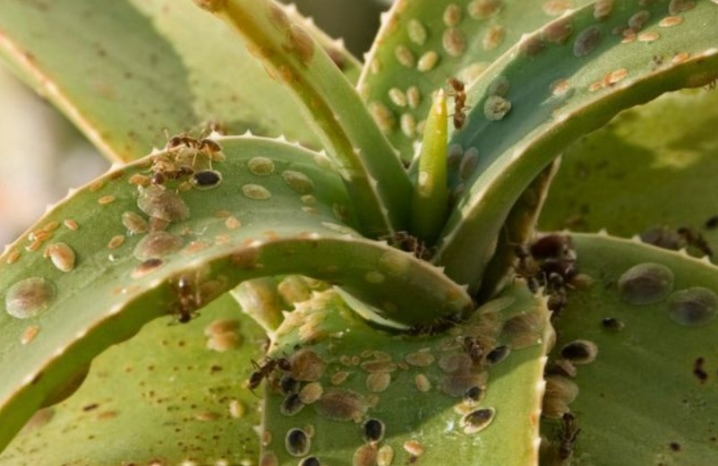
In most cases, the scale insect appears in early spring. At this time, the plant is weakened, and this becomes a decisive factor for the parasite. Flowers with impaired metabolism and an increased nitrogen content are primarily exposed to infection. Usually, both of these are the result of a violation of the irrigation regime, lack of light and too dry air.
Often, the scale insect passes from a new green pet, and insect eggs can also be brought along with the ground and even water.
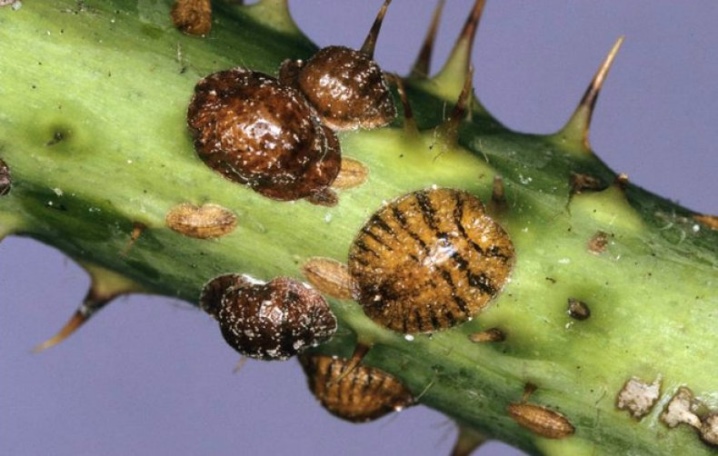
Control methods
Any fight against scale insects on indoor plants should begin with mechanical removal of the parasite. To do this, you need to prepare a concentrated solution of ordinary laundry soap at the rate of 100 g per 1 liter of water and add 200 g of kerosene to it. The resulting mixture must be stirred until a light foam is formed, diluted in 10 liters of water and wiped off the leaves and stems of the affected plant with a sponge.
It is important to try to remove all insects without leaving a single one on the surface.
After processing, the plant is left for 3-5 hours, after which they arrange a warm shower for it. If possible, it is better to change the soil in the pot and the container itself.

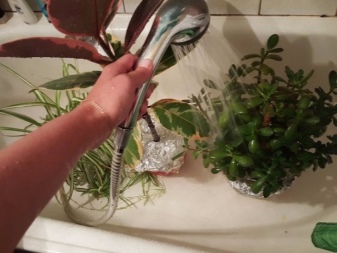
At the initial stages of defeat, such treatment is sufficient, but there is always a high risk that some of the larvae will survive and give new offspring, therefore for the final victory over the parasite, 2-3 rubdowns are required with an interval of 7-10 days... Most often, this measure is considered only as an initial stage in the destruction of the pest, after which other, stronger means are used.
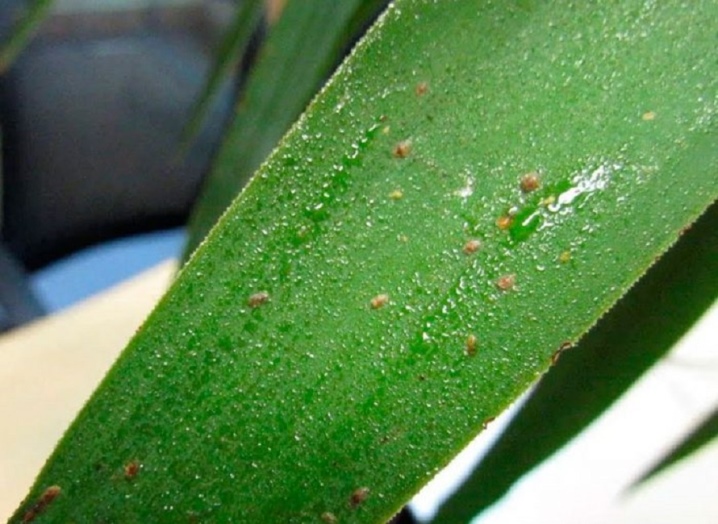
Chemicals
The shield is capable of causing significant damage to plants in the shortest possible time, up to their death, which is why it is best to use insecticides, that is, special chemicals, in the fight against the scourge. Nowadays, the choice of effective drugs is large, but the greatest results are given by formulations designed to destroy dipterans, including the Colorado potato beetle.
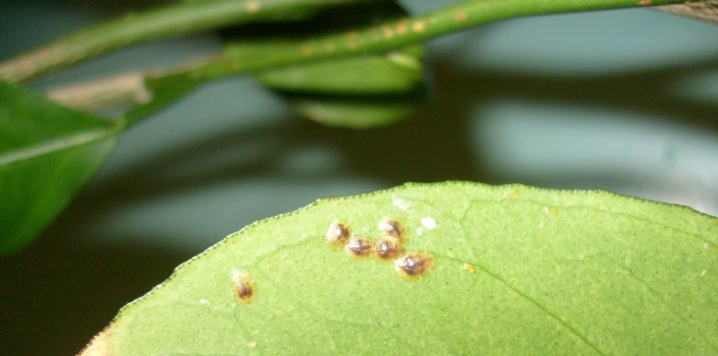
- Aktara. This poison is highly effective, its action is based on damage to the nervous system of the parasite. "Aktara" causes paralysis of the nervous and respiratory systems, destroys insects feeding on the life juices of the plant at any stage of their life cycle. It helps equally both when spraying on the leaves and when processing the substrate.
Aktara tends to accumulate in the green parts of the plant. It is usually used three times with an interval of 7-10 days.
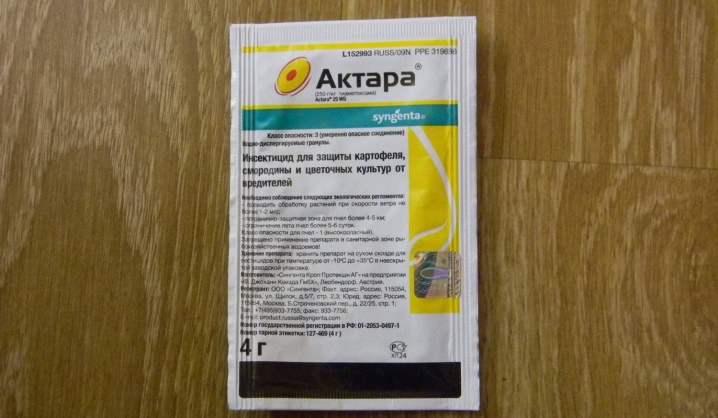
- Actellik. This is a fairly common chemical that can quickly remove the scabbard. The drug is a concentrated emulsion, the main active ingredient of which is pirimiphos-methyl. It acts in several ways at once:
- through the respiratory organs of the parasite;
- through the digestive system;
- through the shell.
If used correctly, Actellik is safe for humans and animals, therefore, today this particular drug has become one of the most popular.
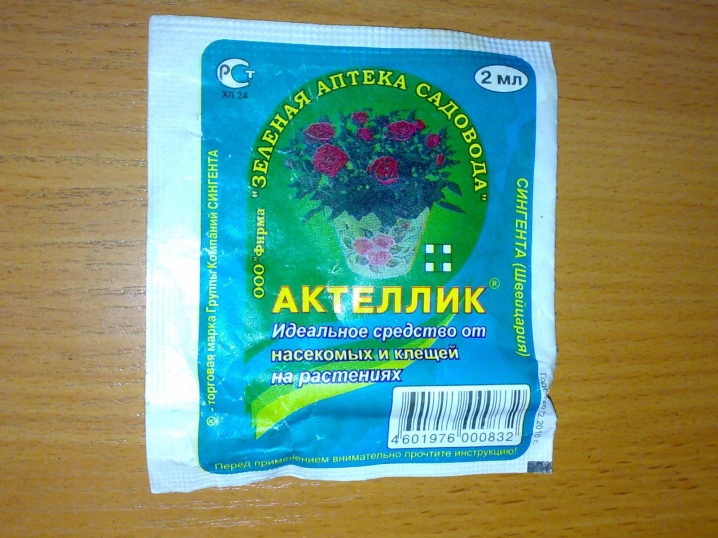
- Fitoverm. This tool is able to cope with most of the problems of indoor plants. It does not belong to highly toxic, therefore, when used in a confined space, it does not entail poisoning of the body. This is very important when it comes to treating a plant from a scale insect in the period from October to April, when it is not possible to spray on the street.

- "Fufanon". The advantage of this drug is that it retains its original concentration for up to 3-4 weeks, so it can be used once without re-processing after hatching of new larvae. This makes "Fufanon" one of the most popular anti-parasite agents in indoor floriculture.
Its active ingredient is malathion, a contact chemical that acts on the insect, entering its body and into the respiratory system. However, when treating a diseased plant with this drug, all safety requirements and instructions must be observed.
Before starting work, you should remove children and pets from the room, use personal protective equipment, and half an hour after treatment, move the plant to another place and thoroughly ventilate the room.

Also, the following can be attributed to effective drugs against the scale insect.
- "Mospilan" - a complex action composition that spreads over all green parts of plants (leaf plates and stems), even reaching those areas that have not been exposed to external treatment.
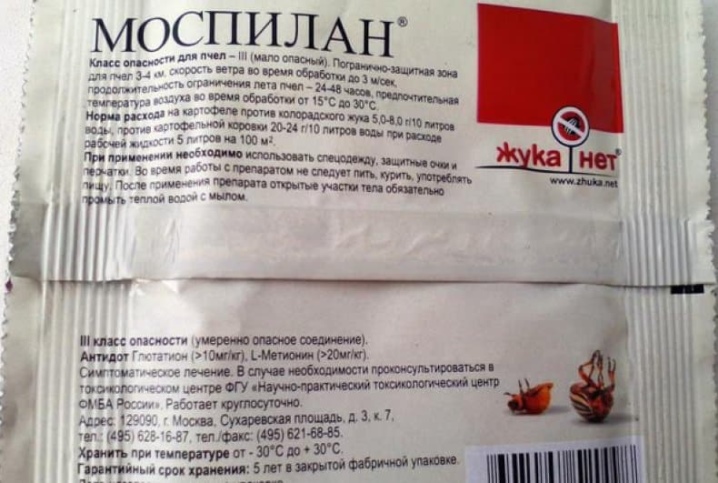
- "Bankol" - a drug that has a strong paralytic effect. After contact with it, insects die after 3 days. The undoubted advantages of the drug include the absence of any chemical odor.
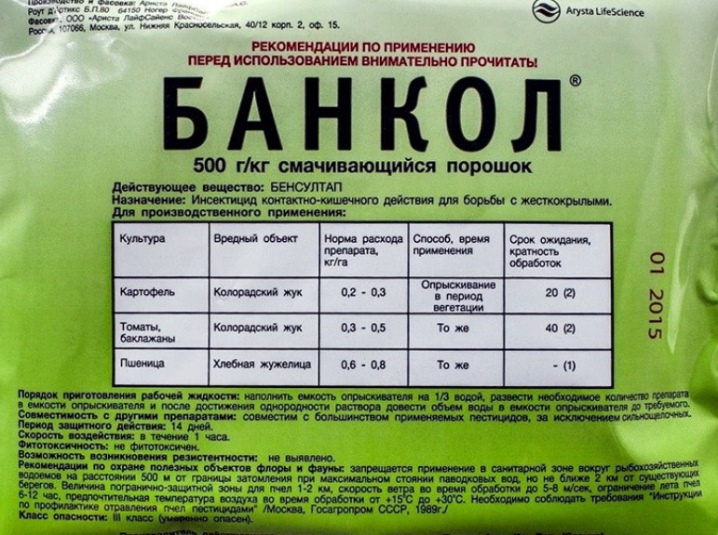
- Etisso Blattlaus-Sticks Is a stick-shaped product that you just need to stick into a container with a green pet. During irrigation of the flower, an intensive release of the active substance begins, which spreads along all the stems and leaves, leading to the neutralization of pests.
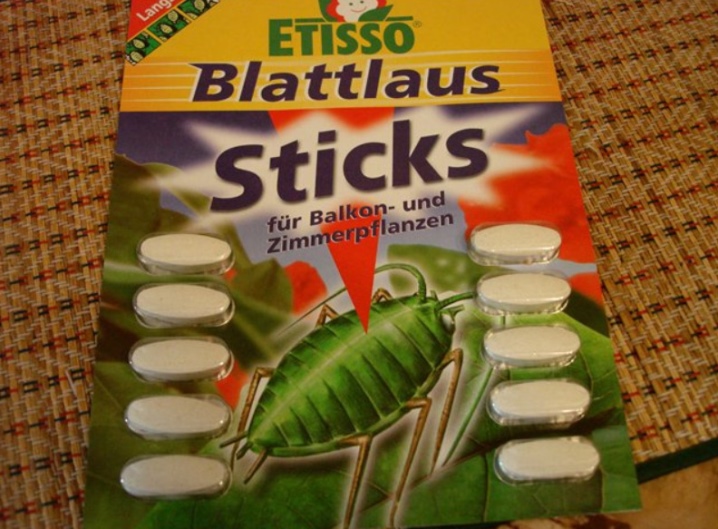
At the initial stages of the disease, a good result is given by "Intavir", "Aliot" and ordinary dichlorvos.
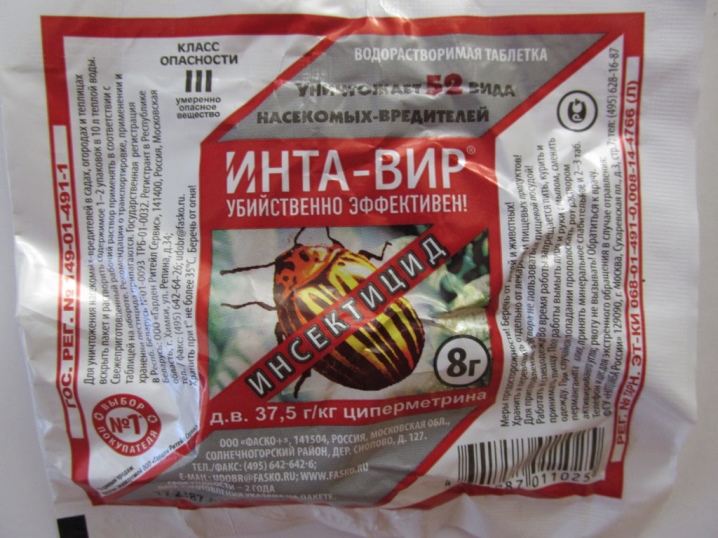
Folk remedies
For those who do not like insecticides, we can recommend "grandmother's" means.
- Garlic infusion shows a good effect. For its preparation, 5 cloves are poured with a glass of warm water and insisted for 3-5 days in a dark place. After that, the composition should be filtered and thoroughly sprayed with the plant, which has been cleared of insects.
- Pepper infusion. The advantage of the tool is that it can be prepared for several treatments at once. 50 g of pepper is poured into 0.5 l of water and boiled for 5-10 minutes, after which it is insisted for about a week. The diseased plant must be treated with this solution at least three times.
- Almost all pests are afraid of celandine. 300 g of grass is poured with a liter of boiling water, insisted for 2 days and processed.
- The oil gives a good result. The fact is that insects, like any other living creatures, need air access. Having lubricated the surface of the leaf plates with sunflower oil, the flow of oxygen stops, and the parasite dies.
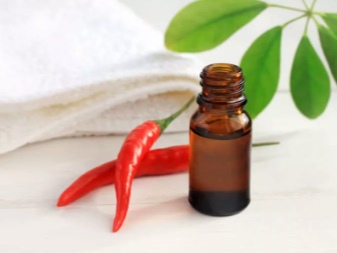
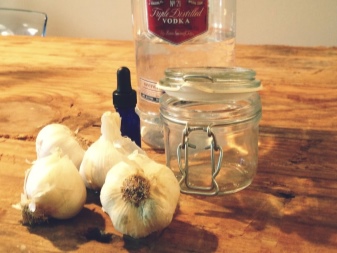
Some complex formulations have proven themselves well:
- 20 ml of green soap + 15 ml of alcohol + 1 liter of hot water;
- 35 g of machine oil + 15 ml of liquid soap;
- 10 ml of burdock oil + 10 g of any washing powder + 1 liter of water;
- 400 g of tar oil + 25 g of liquid soap + 1 liter of water + 3 drops of kerosene.
The prepared solutions are thoroughly stirred, insisted for 5-10 hours, then the culture is sprayed with them from a spray bottle.
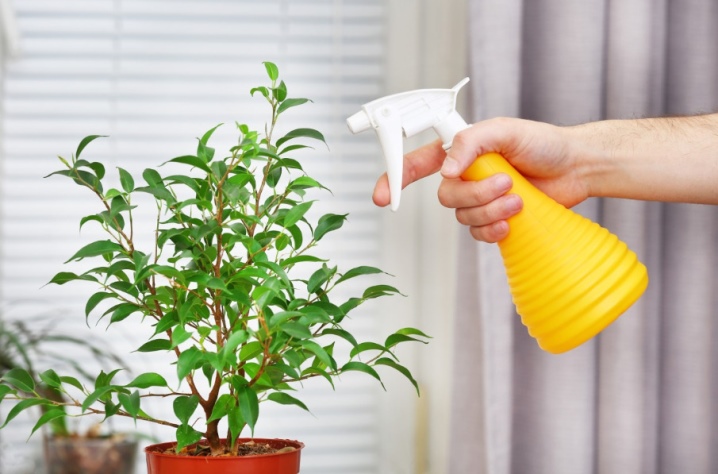
The effect of such remedies is not easy to assess. On the one hand, they are absolutely safe for humans, and this is their undoubted advantage. However, as practice shows, it is possible to get rid of the pest with their help only temporarily - it can be compared with the collection of parasites manually... Already a few days later, a new larva hatches into the world, and the females that survived the treatment make a new clutch, and then a couple of weeks later the plant is attacked by a new generation of scale insects.
If you have several plants at home, then you need to inspect them daily, not hoping for the treatment carried out - the pest should not get a single chance to survive.
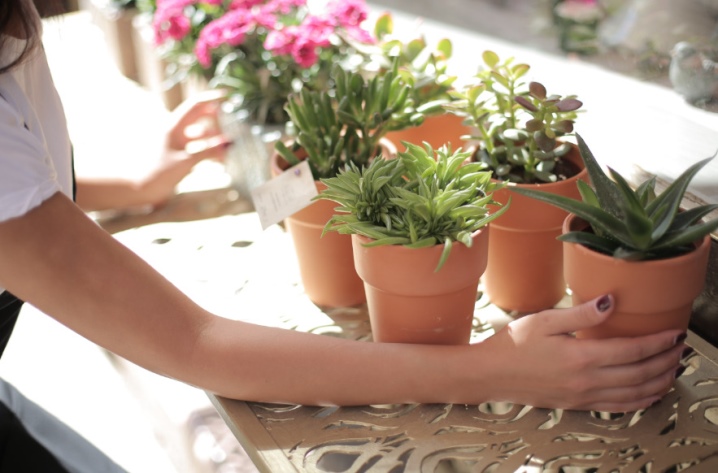
Prevention measures
In order to protect your green pets from the scale insect, you must adhere to the following recommendations:
- buy all new flowers only in specialized stores, in no case from your hands;
- to transplant the culture, use ready-made soil mixtures or at least carry out preliminary disinfection of the soil;
- after buying a new plant, be sure to quarantine it for at least 2 weeks;
- if in the summer you moved the plant to the garden, then after returning it to its place, be sure to wash it with soapy water;
- all affected leaves and stems should be removed immediately;
- Inspect the back of the sheet with a magnifying glass from time to time.
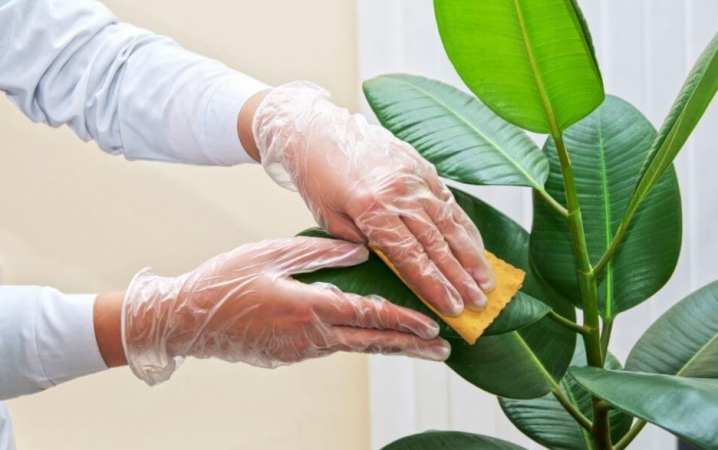
These simple measures will minimize the risk of scaly damage, or at least identify the lesion in the early stages. The scale insect is one of the most dangerous pests of domestic plants, and if you do not start fighting it in a timely manner, the consequences for green pets can be quite dire. Early treatment will allow flowers to recover in no time.
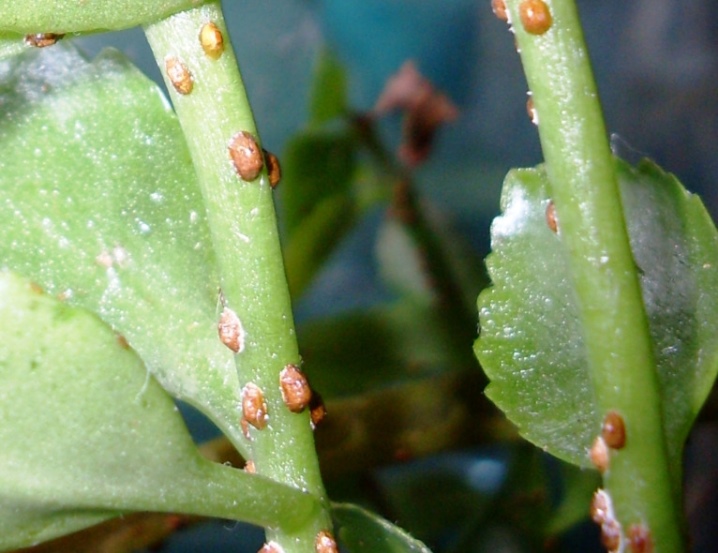
In the next video, you will learn the secrets of dealing with a scabbard from an experienced grower.































The comment was sent successfully.